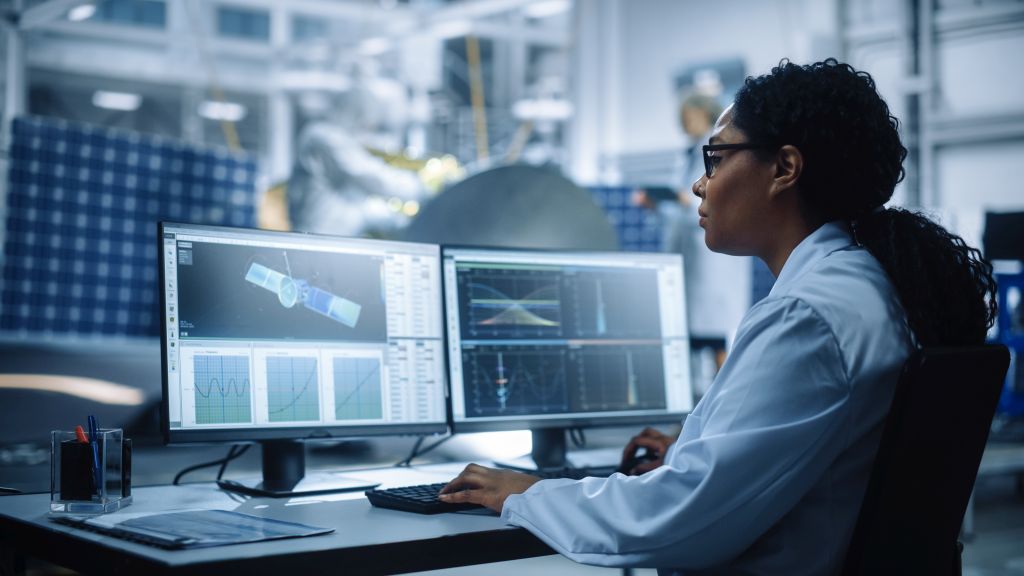It's a change for the better

Todd Tuthill, vice-president of aerospace & defence, Siemens Digital Industries Software looks at how best to solve A&D’s staffing and supply chain issues with digital transformation.
The aerospace and defence industry saw tremendous gains in 2022, with billions of dollars being invested across the industry. This growth was driven by several factors, including the need for new commercial aircraft, an increase in new defence programs, the growth of urban air mobility, a rise of commercial space ventures, and an industry-wide push toward sustainability.
A&D companies, however, are discovering it is much easier to find money than it is to spend it because delivering new products requires two things that are in short supply: skilled labour to design and assemble the products, and the parts to build them. Overcoming these challenges is more complicated than simply recruiting more people, building more parts or even just working harder with the tools already available. To succeed, the A&D industry must fully embrace digital transformation.
While many companies have adopted digital technologies, most are just using them as individual tools, which largely remain separate islands of unique sets of data. Data is moved between these islands in Excel-powered rowboats, paddled by engineers. There is untapped opportunity for innovation and transformation that goes beyond the adoption of individual tools. A holistic approach to engineering would connect the islands and streamline the flow of data, enabling companies to overcome challenges and deliver on new programs more quickly and efficiently.
Multiplying the workforce
The A&D industry is experiencing a shortage of tens of thousands of engineers worldwide. While digital transformation cannot magically increase the number of available aerospace engineers, it can help companies multiply the impact of the ones they have.
When I started my career as a systems engineer, everything was document-driven. I spent much of my time chasing documents and moving data between islands. Nearly 30 years later, engineers are still spending an immense amount of time documenting things instead of engineering things. With computers and digital technologies, instead of chasing reams of printed documents, engineers are tracking down electronic documents. We have gone from paper-based systems to Microsoft Office-based systems.

Digital transformation can shift the administrative work onto computers and algorithms. These algorithms can aggregate data with remarkable efficiency around the digital twin, creating a single source of truth for engineers and letting them devote time and focus on creating models and iterating the results of the models’ analyses. This can dramatically increase the impact of engineers and in turn overall productivity. Instead of requiring a large team to manage all the individual systems and their data, a small team can manage the digital twin. With all the data in one place, that small team can optimise a whole product rather than suboptimise individual subsystems.
The benefits go beyond multiplying the impact of current aerospace engineering. A holistic approach to digital transformation can also help attract new talent. Engineers want to be creators and innovators, not data administrators. Digital transformation will give them the technology and work environment to do just that.
Connecting supply chains
Of course, engineers still need parts to build products with, but supply chain bottlenecks have made sourcing those parts difficult. The Covid-19 pandemic and global tensions have exacerbated existing coordination issues between OEMs, suppliers, and clients. With OEMs and some Tier 1 suppliers managing networks with thousands of organisations, supply chain management cannot be another data island. Digital Transformation can give A&D companies deep visibility into their supply chains, and the ability to connect supply chain decisions to design, manufacturing and support teams.
A digitally transformed supply chain provides a host of benefits. In addition to performance, the system level impact of component lead times, availability, pricing, and obsolescence can be analysed and understood before the designer choses a part. Manufacturing teams can quickly find an alternate part at any point in the product lifecycle. A supply chain digital twin can provide more complex analyses such as overall impact of a raw material shortage or a strike at a Tier 2 supplier. With real-time information at their fingertips, companies can optimise their supply chain decisions and open bottlenecks.
Now is the time
Digital transformation offers numerous tools to reduce risk across the entire A&D industry. To fully capitalise on the industry’s newfound gains and overcome key obstacles like the labour shortage and supply chain bottlenecks, however, the industry must not only adopt new tools, but also work toward a holistic digitalisation strategy to connect disparate disciplines. Now is the time to invest in digital transformation across the industry to effectively use the gains of 2022 and propel A&D into the future.













